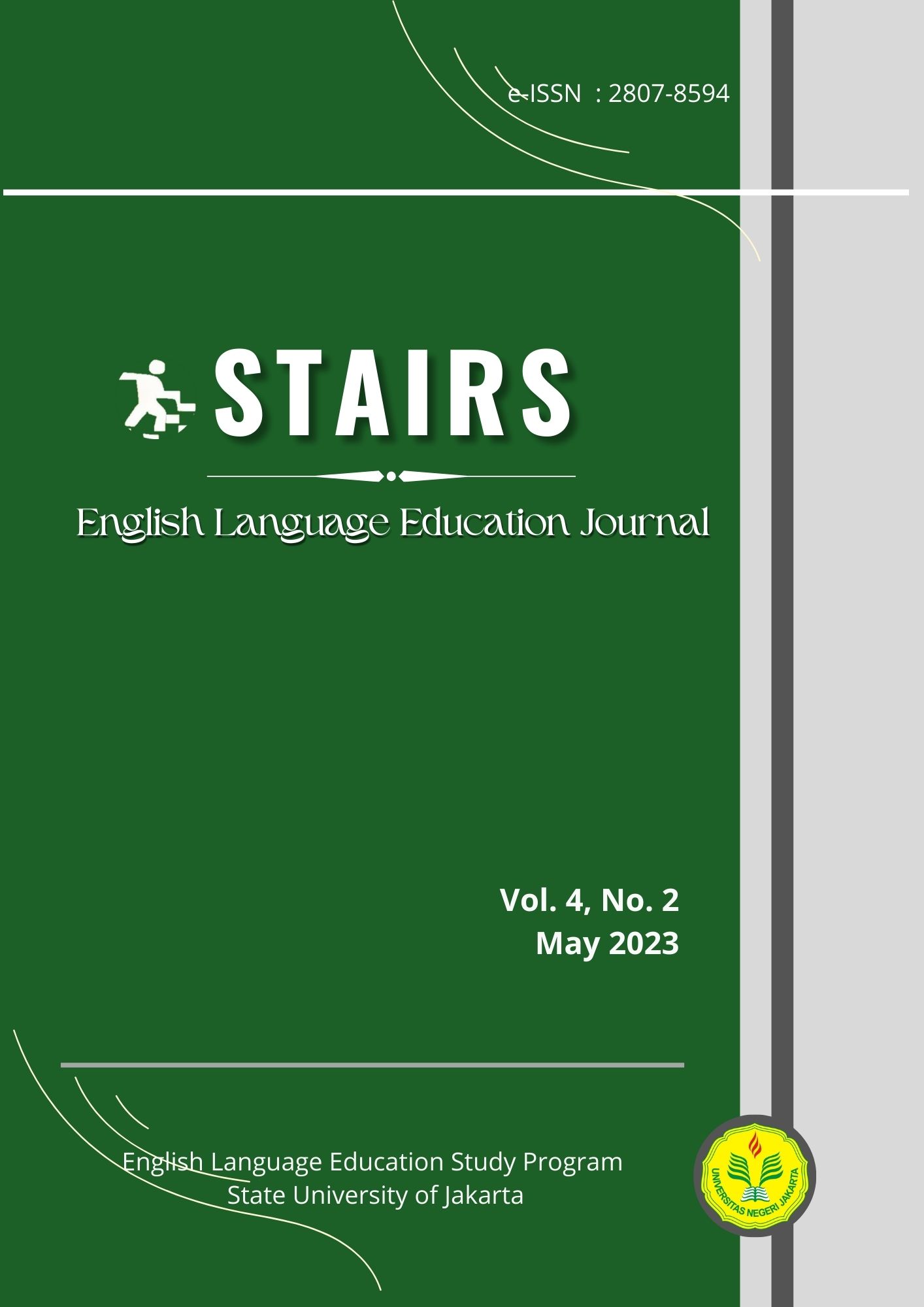Cohesion and Coherence in Remarks by President Biden in the Joint Statement with Ukraine
DOI:
https://doi.org/10.21009/stairs.4.2.7Keywords:
Coherence, Cohesion, Hymes’ SPEAKING model, Speech discourseAbstract
This research paper focuses on the analysis of cohesion and coherence in the remarks made by President Biden during the Joint Statement with Ukraine. The study aims to examine the logical flow, consistency, and clarity of President Biden's statements in the context of the U.S.-Ukraine relationship. A content analysis approach is employed to analyze the speech delivered by President Biden, including key themes, messaging, and any potential inconsistencies. The findings of this analysis contribute to understanding the effectiveness of President Biden's communication strategy and the coherence of his administration's approach toward Ukraine. The analysis presents a comprehensive understanding of the cohesion and coherence exhibited by President Biden in the Joint Statement with Ukraine, offering valuable insights into the U.S. government's stance towards Ukraine and its broader foreign policy objectives. The findings of this research provide valuable insights into the effectiveness of President Biden's communication strategy and the coherence of his administration's approach toward Ukraine. By assessing the cohesion and coherence in President Biden's remarks, this analysis offers a comprehensive understanding of the administration's commitment to supporting Ukraine in various domains, including security, democracy, and economic development.
References
Halliday, M. A. K., & Hasan, R. (1976). Cohesion in English. London: Longman.
Heidemann, J., Klier, M., & Probst, F. (2012). Online Social Networks: A Survey of a Global Phenomenon. Computer Networks, 56(18), 3866-3878, https://doi.org/10.1016/j.comnet.2012.08.009.
Hymes, D. (1974). Foundations in Sociolinguistics: An Ethnographic Approach. doi:10.4324/9781315888835
Knapp, P., & Watskin, M. (2005). Genre, Text, Grammar: Technologies for Teaching Writing and Assessing Writing. Sydney: A UNSW Press Book.
Mayring, P. (2015). Qualitative Content Analysis: Theoretical Background and Procedures. 365–380. https://doi.org/10.1007/978-94-017-9181-6_13
Noy, C. (2017). Ethnography of Communication. The International Encyclopedia of Communication Research Methods, pp. 1–11. doi:10.1002/9781118901731.iecrm0089
Oshima, A., & Hogue, A. (2006). Writing Academic English. England: Pearson Longman.
Puteri, M. S., Arifin, M. B., & Rahayu, F. E. S. (2020). The Analysis of The Illocutionary Acts in Theresa May’s Britain, The Great Meritocracy Speech. Ilmu Budaya (Jurnal Bahasa, Sastra, Seni, Dan Budaya), 4(4), 568-583.
Rahayu, F. N., Arifin, M. B., & Ariani, S. (2018). Illocutionary Act in the Main Characters’ Utterances in Mirror Mirror Movie. Jurnal Ilmu Budaya Vol, 2(2).
Rahmawati, R. D. U. (2021). An Analysis of Expressive Speech Acts Used in Crazy Rich Asian Movie. Journal of Language and Literature, 9(1).
El-Zaghal , F. T. G. (2021). Fields of Text Studies and Discourse Analysis: A Study in Light of Applying Dell Hymes Speaking Model to Joe Biden's Speech on the Middle East (2021). International Journal of Humanities and Language Research, 4(1), 1-39.
Umezinwa, J. (2019). Analysis of a Selected Bargain Discourse using Dell Hymes’ SPEAKING model. DOI:10.13140/RG.2.2.21516.16004



